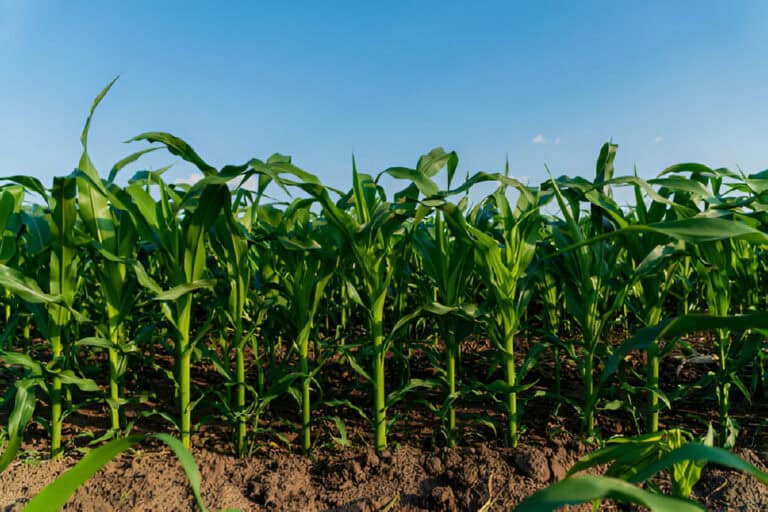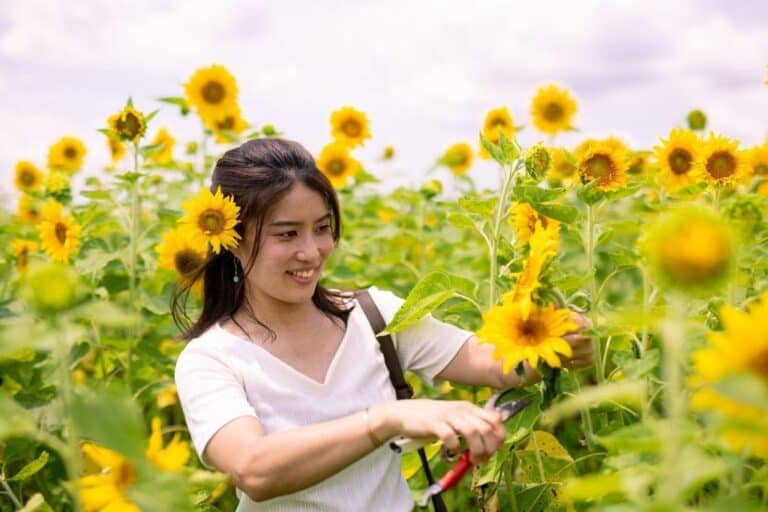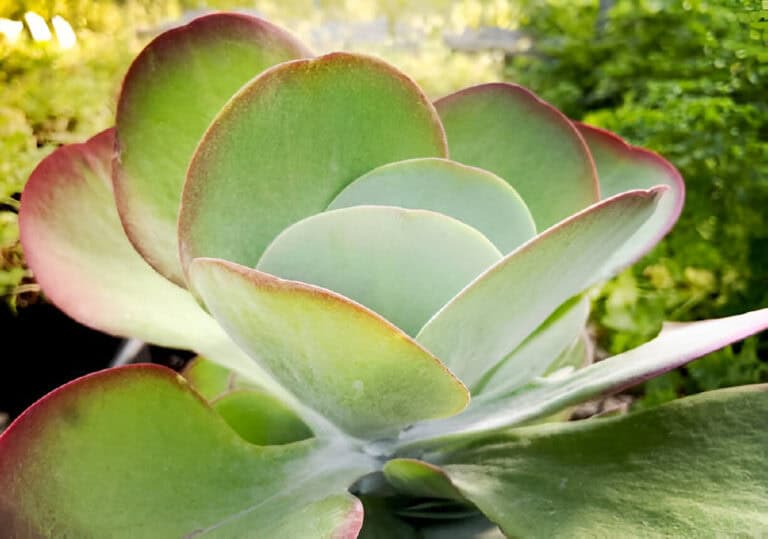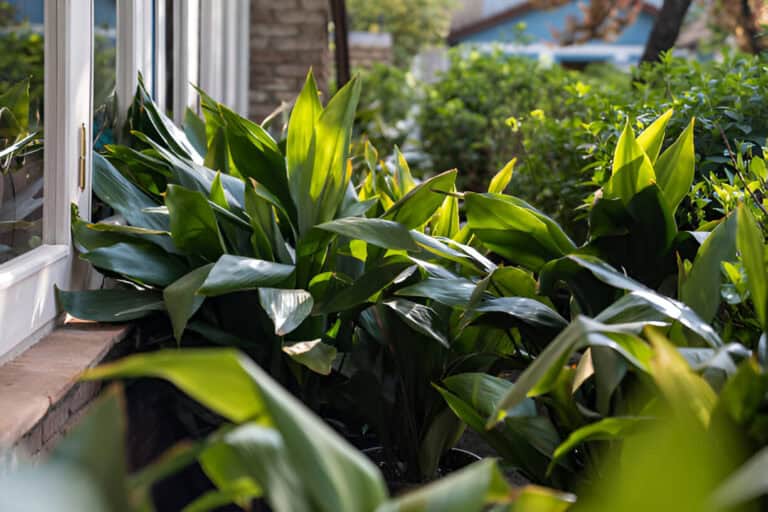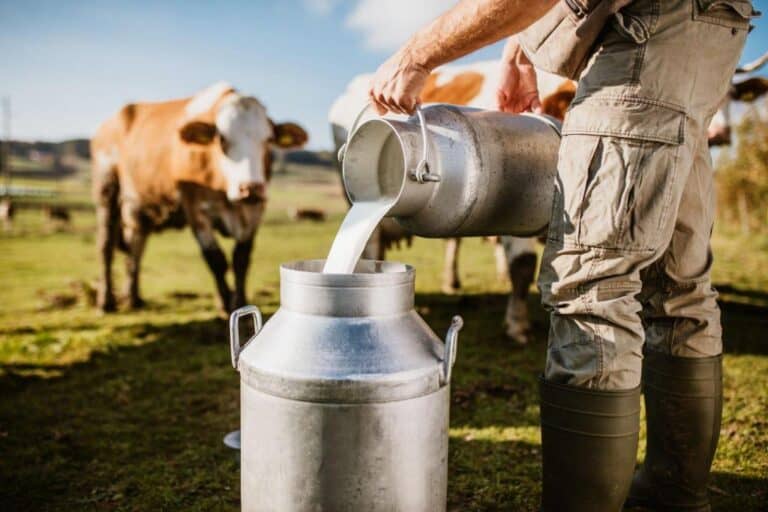Dryland vs. Wetland Farming: What Is the Difference?
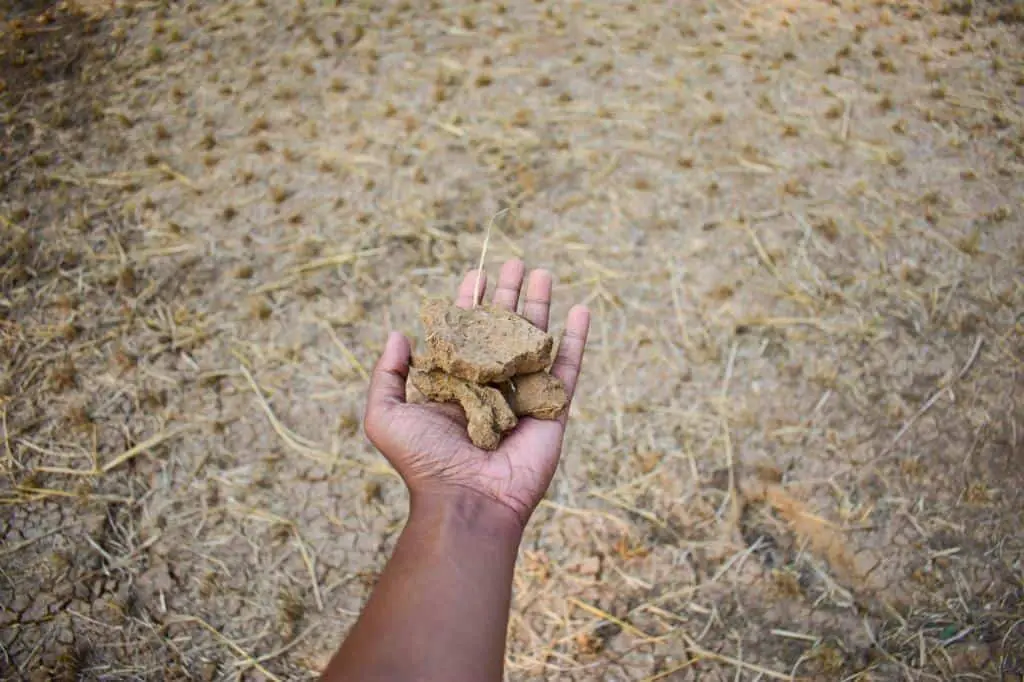
Farming has been a fundamental part of human civilization for thousands of years. It has evolved over time, adapting to different geographical and environmental conditions. One of the key distinctions in farming methods lies in the type of land used for cultivation. Dryland farming and wetland farming are two contrasting approaches that have their own unique characteristics and challenges.
In this article, we will explore the differences between dryland and wetland farming, shedding light on the distinct features, benefits, and considerations associated with each method.
By understanding the nuances of dryland and wetland farming, we can gain insights into their unique approaches and appreciate their contributions to sustainable agriculture.
Dryland Farming
Dryland farming, as the name suggests, refers to agricultural practices carried out in regions with limited rainfall or areas that lack a consistent water supply. It is typically practiced in arid or semi-arid regions where precipitation is sparse and water conservation becomes crucial.
The success of dryland farming largely depends on the efficient utilization of water resources and the ability to adapt to challenging conditions.
Characteristics of Dryland Farming
Dryland farming presents several distinct characteristics that set it apart from other farming methods:
- Water Management: In dryland farming, water management is of utmost importance. Farmers must implement strategies to maximize the utilization of available water resources and minimize water loss through evaporation or runoff. Techniques such as rainwater harvesting, contour plowing, and mulching are commonly employed to conserve water.
- Crop Selection: The choice of crops in dryland farming is crucial, as they need to be resilient to drought and capable of surviving in arid conditions. Crops like millet, sorghum, and certain varieties of wheat and barley are well-suited for dryland farming due to their ability to tolerate limited water availability.
- Soil Conservation: Dryland farming often faces the challenge of soil erosion due to the lack of vegetation cover and heavy wind or rainfall. Implementing soil conservation measures like terracing, windbreaks, and contour farming helps prevent erosion and maintain soil fertility.
Benefits of Dryland Farming
While dryland farming comes with its share of challenges, it also offers several benefits:
- Lower Water Requirements: Dryland farming reduces dependency on irrigation systems, as crops are primarily sustained by natural rainfall. This can lead to cost savings and reduced water usage.
- Lower Input Costs: Compared to wetland farming, dryland farming generally requires fewer inputs such as fertilizers and pesticides. This can result in lower production costs for farmers.
- Sustainable Farming: Dryland farming practices, such as water conservation techniques and soil conservation measures, promote sustainability by minimizing the impact on the environment and preserving natural resources.
Wetland Farming
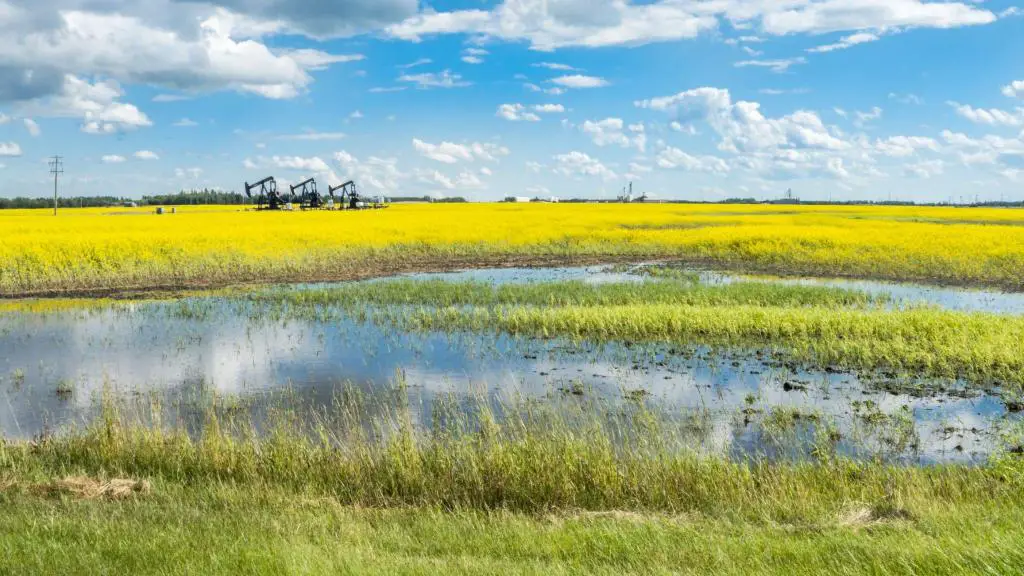
Wetland farming, on the other hand, involves cultivating crops in areas with abundant water resources, such as marshes, swamps, or areas near rivers and lakes. The availability of water in wetland farming allows for a different set of agricultural practices and presents its own set of advantages and considerations.
Characteristics of Wetland Farming
Wetland farming encompasses the following key characteristics:
- Water Availability: The primary characteristic of wetland farming is the abundance of water. This enables farmers to rely on irrigation systems or natural water bodies for crop cultivation, reducing the dependence on rainfall.
- Crop Diversity: Wetland farming often allows for a wider range of crops due to the availability of water throughout the year. Crops such as rice, lotus, and certain vegetables thrive in wetland conditions.
- Flood Management: Wetland farming necessitates effective flood management techniques to mitigate the risk of crop damage. Strategies such as levees, canals, and drainage systems are employed to regulate water levels and prevent excessive flooding.
Benefits of Wetland Farming
Wetland farming offers numerous benefits that make it a viable option in certain regions:
- Higher Yield Potential: The availability of water throughout the year and the ability to regulate irrigation systems enable wetland farmers to achieve higher crop yields. This can contribute to food security and increased profitability.
- Crop Nutrient Availability: Wetland soils are often rich in nutrients, making them ideal for crop growth. The continuous availability of water allows for nutrient absorption by plants, leading to healthier and more productive crops.
- Aquatic Resource Utilization: Wetland farming provides opportunities for the cultivation of aquatic plants and the rearing of aquatic animals. This diversification can enhance income streams for farmers and promote sustainable aquaculture practices.
- Habitat for Biodiversity: Wetlands serve as important habitats for various wildlife species and contribute to biodiversity conservation. Wetland farming, when practiced sustainably, can maintain or enhance these ecological functions.
Dryland vs. Wetland Farming: What Is the Difference?
Comparing Water Requirements: Dryland vs. Wetland Farming
Water availability is a critical factor that distinguishes dryland farming from wetland farming:
Dryland farming
In regions with limited rainfall, dryland farmers must carefully manage water resources. Rainwater harvesting, moisture-retaining techniques, and efficient irrigation methods like drip irrigation or sprinkler systems are employed to ensure optimal water usage in dryland farming. These practices help conserve water and maximize its availability for crops, mitigating the effects of water scarcity.
Wetland farming
Wetland farming, on the other hand, benefits from abundant water resources. The presence of natural water bodies or the use of irrigation systems allows for consistent water availability in wetland farming. However, it is important to manage water levels effectively to prevent waterlogging and maintain optimal conditions for crop growth and aquaculture.
Comparing the water requirements between these two farming systems highlights their differences in water usage and management. Dryland farming focuses on water conservation and efficient utilization due to limited water availability, while wetland farming capitalizes on the abundant water resources to support crop growth and aquaculture.
Crop Selection and Adaptation: Dryland vs. Wetland Farming
Crop selection plays a vital role in both dryland and wetland farming systems. Here’s an overview of the considerations and adaptations specific to each:
Dryland farming
Given the arid or semi-arid conditions, dryland farmers opt for crops that can thrive in low rainfall and withstand drought stress. Drought-tolerant crops like millet, sorghum, legumes, and certain varieties of wheat and corn are commonly cultivated. Additionally, implementing crop rotation and diversification strategies helps manage risks and optimize productivity in dryland areas.
Wetland farming
Wetland farming often revolves around rice cultivation in paddy fields and aquaculture. Rice is a staple crop in many wetland regions due to its ability to grow in waterlogged conditions. Farmers also engage in fish farming and other aquatic plant cultivation, capitalizing on the unique opportunities provided by wetland ecosystems.
Adaptation is crucial in both farming systems to ensure crop resilience and productivity. In dryland farming, crop breeding programs focus on developing varieties with drought tolerance, improved water-use efficiency, and pest and disease resistance.
In wetland farming, farmers employ techniques like water management through controlled flooding and the use of organic fertilizers to support the growth of rice and aquatic plants.
Soil Management: Dryland vs. Wetland Farming
Soil management practices vary between dryland and wetland farming systems to address their specific soil characteristics and challenges. Let’s explore the key considerations:
Dryland farming:
In dryland areas, soil conservation is paramount due to the vulnerability to erosion and degradation caused by wind and water. Dryland farmers adopt several practices to preserve soil health and structure. Contour plowing, terracing, and strip cropping help reduce erosion by slowing down water flow and preventing soil runoff.
Cover cropping and mulching are employed to protect the soil from direct sunlight, retain moisture, and enhance organic matter content. Additionally, sustainable tillage techniques, such as minimum tillage or no-till farming, are implemented to reduce soil disturbance.
Wetland farming:
Wetland soils have different characteristics, often rich in organic matter and nutrients due to sediment deposition and waterlogged conditions. Wetland farmers focus on soil fertility management and nutrient optimization.
Techniques like integrated nutrient management, where organic and inorganic fertilizers are used in combination, help maintain optimal nutrient levels. Careful water management, including drainage systems, is implemented to prevent waterlogging and maintain appropriate soil moisture levels for crop growth.
By implementing these soil management practices, both dryland and wetland farmers aim to improve soil health, maximize nutrient availability, and sustain long-term agricultural productivity in their respective farming systems.
Economic Factors: Dryland vs. Wetland Farming
Economic considerations play a crucial role in the viability and profitability of both dryland and wetland farming. Let’s examine some key factors influencing the economic aspects of each farming system:
Dryland farming
Factors like these frequently have an impact on dryland farming’s economic viability:
- Market demand: Farmers need to consider the market demand for crops suitable for dryland conditions. Identifying crops with higher market value and demand can contribute to profitability.
- Input costs: Efficient resource management is crucial in dryland farming to minimize input costs. Farmers need to carefully consider expenses related to water, seeds, fertilizers, and pest control measures.
- Risk management: Due to the inherent variability in rainfall and water availability, dryland farmers face higher production risks. Implementing risk management strategies like crop insurance, diversification, and savings can help mitigate these risks.
- Government support: Access to government policies, subsidies, and support programs can significantly impact the economic viability of dryland farming. Farmers should stay informed about available assistance and take advantage of relevant initiatives.
Wetland farming
Economic considerations in wetland farming include:
- Crop choice and market demand: Farmers need to assess the market demand for rice, fish, and other products associated with wetland farming. Identifying high-value crops and understanding market trends can enhance profitability.
- Infrastructure investments: Wetland farming may require investments in infrastructure such as irrigation systems, bunds, and drainage channels. Assessing the costs and benefits of these investments is crucial for economic planning.
- Value chains: Understanding the value chains and market linkages associated with wetland farming products is essential. Developing relationships with processors, distributors, and retailers can help optimize profits.
- Government policies: Policies related to water rights, land-use regulations, and subsidies can significantly influence the economic dynamics of wetland farming. Staying updated on relevant policies and engaging with government support programs is beneficial.
Considering these economic factors allows farmers in both dryland and wetland regions to make informed decisions, optimize resource allocation, and improve the economic sustainability of their farming practices.
Environmental Impact: Dryland vs. Wetland Farming
The environmental impact of farming practices is an important aspect to consider in both dryland and wetland farming systems. Here are some key points to understand:
Dryland farming
Dryland farming can have significant environmental implications due to the vulnerability of arid and semi-arid ecosystems. The key considerations include:
- Soil degradation: The risk of soil erosion and degradation is high in dryland areas, leading to reduced soil fertility and loss of topsoil. Implementing soil conservation practices like contour plowing, terracing, and cover cropping helps mitigate these risks.
- Water conservation: Dryland farmers prioritize efficient water management to mitigate water scarcity. Practices such as rainwater harvesting, drip irrigation, and water-use monitoring help conserve water resources and minimize environmental impact.
- Biodiversity conservation: Dryland ecosystems are often characterized by unique plant and animal species adapted to arid conditions. Sustainable farming practices in dryland areas should consider preserving biodiversity and minimizing habitat disruption.
Wetland farming
Wetland farming, too, has environmental considerations specific to these ecosystems:
- Water management: Effective water management is crucial in wetland farming to prevent water pollution, maintain water quality, and prevent excessive water extraction that may impact wetland ecosystems.
- Biodiversity preservation: Wetland ecosystems are rich in biodiversity, supporting diverse plant and animal species. Sustainable wetland farming practices should minimize the negative impact on these ecosystems, preserving habitats and promoting biodiversity conservation.
- Waste management: Proper waste management in wetland farming, especially in aquaculture systems, is important to prevent nutrient pollution and maintain water quality.
By adopting sustainable practices, both dryland and wetland farmers can minimize their environmental footprint, conserve natural resources, and contribute to the overall sustainability of agricultural systems.
Which Is More Sustainable: Dryland or Wetland Farming?
When it comes to sustainability in agriculture, the question of whether dryland farming or wetland farming is more sustainable is a complex one. Both methods have their own unique characteristics and considerations that influence their sustainability in different ways.
Dryland farming, with its emphasis on water conservation and adaptation to arid conditions, offers sustainability benefits in regions where water resources are limited. By implementing techniques like rainwater harvesting, contour plowing, and mulching, dryland farmers maximize the utilization of available water and minimize water loss.
These practices not only reduce water consumption but also contribute to the preservation of precious water resources. Additionally, the selection of drought-tolerant crops like millet, sorghum, and certain varieties of wheat and barley ensures that agricultural productivity can be maintained even in challenging conditions. This resilience to drought helps build long-term sustainability by reducing the vulnerability of the farming system to water scarcity.
On the other hand, wetland farming, with its reliance on abundant water resources, offers its own sustainability advantages. The availability of water throughout the year enables wetland farmers to achieve higher crop yields and, in turn, contribute to food security.
The regulation of irrigation systems and the management of flood control measures, such as levees, canals, and drainage systems, help mitigate the risks of excessive flooding and crop damage. Moreover, the nutrient-rich soils found in wetland areas provide a natural advantage for crop growth, reducing the need for synthetic fertilizers.
This not only reduces input costs but also minimizes the environmental impact associated with the use of chemical fertilizers. Furthermore, wetland farming can offer opportunities for the cultivation of aquatic plants and the rearing of aquatic animals, providing additional income streams for farmers and promoting sustainable aquaculture practices.
In determining which farming method is more sustainable, it is important to consider the specific context and environmental conditions. Factors such as the availability of water resources, the local climate, and the ecological sensitivity of the area all play a crucial role. What may be sustainable in one region may not necessarily be applicable in another. The key lies in implementing farming practices that are best suited to the local conditions and that prioritize the preservation of natural resources.
It is worth noting that sustainability in agriculture goes beyond the choice between dryland and wetland farming. Regardless of the method employed, sustainable farming practices are essential for long-term viability. This includes the responsible use of resources, the reduction of greenhouse gas emissions, the protection of biodiversity, and the promotion of soil health.
Incorporating agroforestry techniques, adopting precision farming technologies, and implementing organic farming practices are just a few examples of how sustainability can be enhanced in both dryland and wetland farming systems.
FAQs
Do dryland farmers only rely on rainfall for irrigation?
While dryland farmers primarily depend on rainfall, they also employ techniques like rainwater harvesting and efficient irrigation methods such as drip irrigation to optimize water usage and sustain crop growth.
Can wetland farming be practiced in areas without natural water bodies?
Wetland farming can be practiced in areas without natural water bodies through the use of irrigation systems and water retention techniques. Adequate water management is essential to create suitable wetland conditions for farming.
What are the environmental benefits of wetland farming?
Wetland farming provides environmental benefits such as natural water filtration, habitat preservation for diverse species, carbon sequestration, and the potential for biodiversity conservation.


